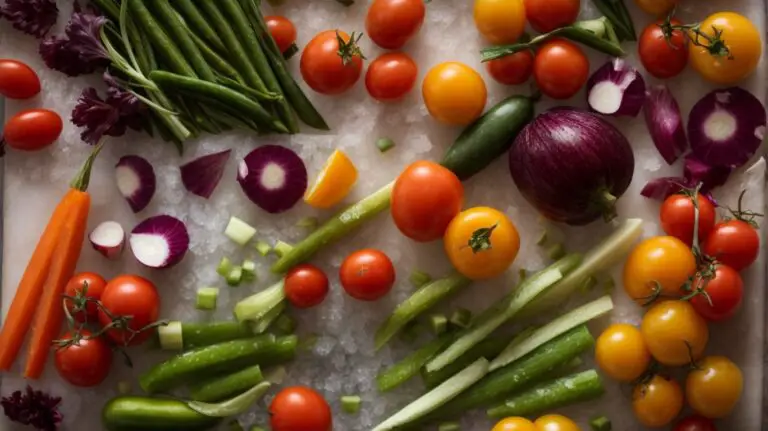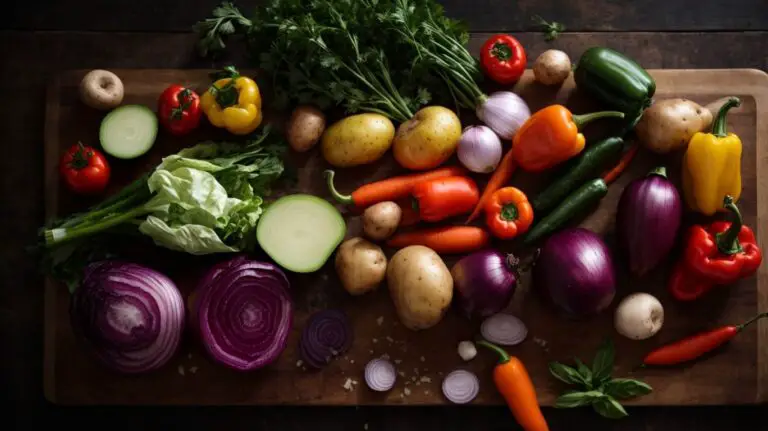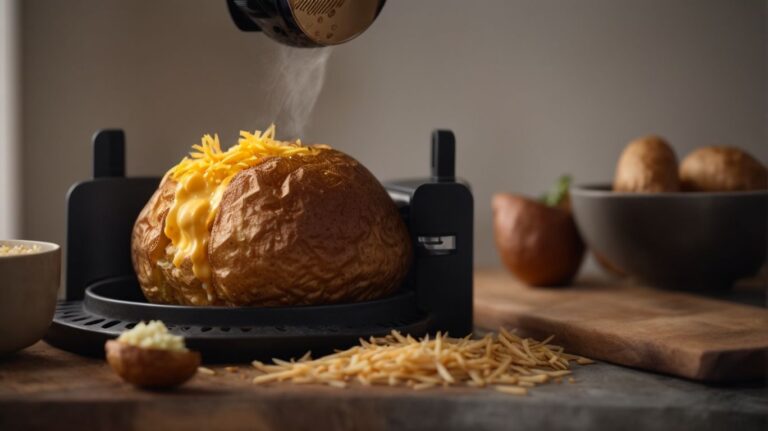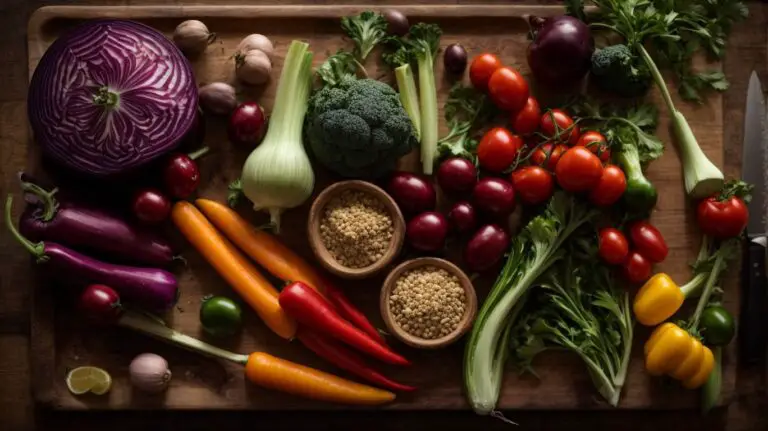How to Cook Kohlrabi?
Looking to add a new and versatile vegetable to your cooking repertoire?
Discover kohlrabi!
We cover everything you need to know about this unique vegetable, from how to choose and store it to various cooking methods and delicious recipes.
Whether you’re a seasoned chef or just starting out in the kitchen, we’ve got you covered with tips and tricks for incorporating kohlrabi into your meals.
Get ready to elevate your cooking game with this underrated gem!
Key Takeaways:
About Kohlrabi
Kohlrabi, a versatile vegetable, is known for its unique taste and crunchy texture, making it a popular choice in various dishes.
Originally cultivated in Europe, kohlrabi has now made its way into global cuisine, adding a refreshing and slightly peppery flavor. Not only is it delicious raw in salads, slaws, and crudites, but it also shines when cooked in soups, stews, and stir-fries.
With its bulbous stem and edible leaves, kohlrabi offers a range of culinary possibilities. It can be roasted, steamed, grilled, or pickled to create diverse dishes that cater to different palates.
How to Choose and Store Kohlrabi
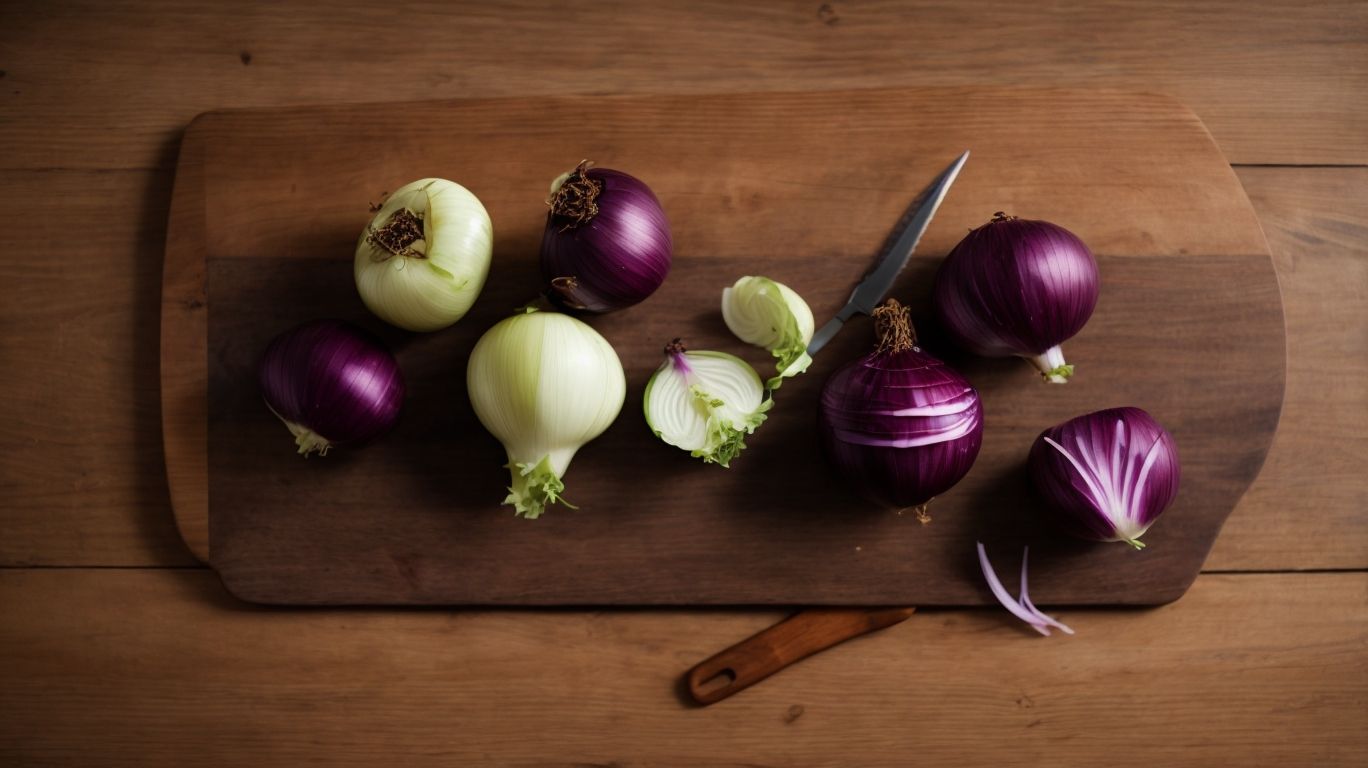
Credits: Poormet.Com – Jerry Anderson
Choosing and storing kohlrabi correctly is essential to maintain its freshness and flavor for your culinary creations.
When selecting ripe kohlrabi, look for ones that are firm and heavy with smooth, unblemished skin. Avoid any that appear wilted or have soft spots.
Proper storage is key to preserving its crispness and taste. After purchasing, remove the leaves (if attached) and store the bulb in a perforated plastic bag in the refrigerator crisper for up to two weeks.
For prolonged storage, you can also blanch and freeze kohlrabi, extending its shelf life for several months without compromising its quality.
What to Look for When Choosing Kohlrabi?
When choosing kohlrabi, look for firm bulbs with fresh, vibrant leaves in shades of green or purple, indicating their freshness and quality.
Pay attention to the skin’s smooth texture, which should be free from any blemishes or soft spots, as these can suggest overripeness or poor handling. The size of the bulb is also a factor; opt for medium-sized kohlrabi for a good balance of flavor and tenderness. Remember that smaller bulbs tend to be sweeter, while larger ones may have a more fibrous texture. A healthy and vibrant appearance signals that the kohlrabi is at its peak freshness and flavor, ready to be used in a variety of culinary creations.
How to Store Kohlrabi?
To store kohlrabi, remove the greens and store them separately, while the bulbs can be kept in a perforated plastic bag in the refrigerator, or submerged in broth for added flavor.
To maintain the freshness of kohlrabi greens, place them in a damp paper towel or a plastic bag before refrigerating. This will help prevent wilting and extend their shelf life. Remember to remove any damaged or yellowing leaves before storage.
If you choose to store the kohlrabi bulbs in the refrigerator, make sure to keep them away from fruits like apples and pears, as these can release ethylene gas, leading to premature ripening.
How to Prepare Kohlrabi for Cooking?
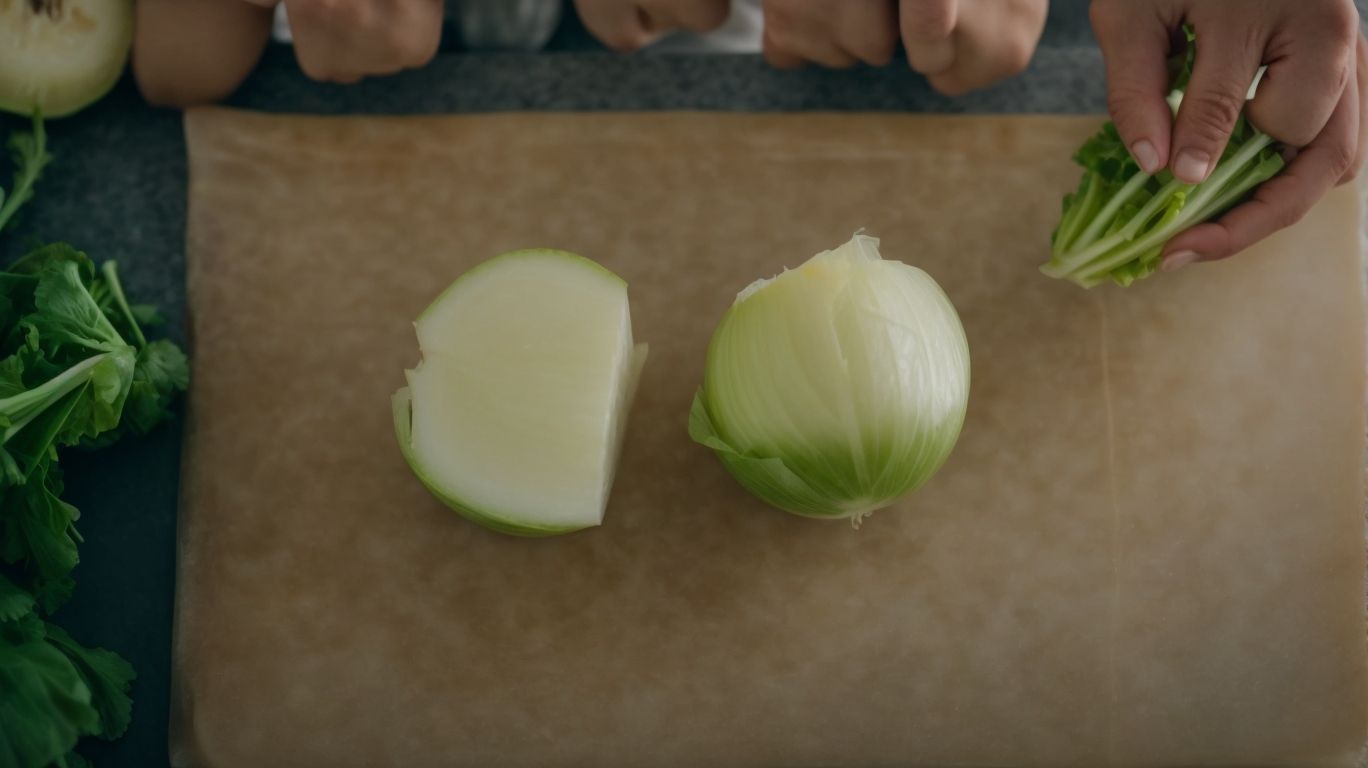
Credits: Poormet.Com – Stephen Carter
Preparing kohlrabi for cooking involves simple steps like peeling the tough outer skin and cutting it into desired shapes for your culinary creations.
Regarding peeling kohlrabi, make sure to use a sharp knife or vegetable peeler. Start by cutting off the stem and root ends. Then, place the kohlrabi on a cutting board and carefully slice off the outer skin, ensuring to remove the tough, fibrous layer completely. Once peeled, you can slice, dice, or julienne the kohlrabi to suit the recipe you’re preparing. Whether you’re roasting, sautéing, or adding it to salads, kohlrabi’s mild, slightly sweet flavor adds a unique twist to dishes.
How to Peel Kohlrabi?
Peeling kohlrabi is a simple process where you remove the tough outer skin to reveal the tender flesh underneath, suitable for raw consumption or cooking.
When peeling kohlrabi, it’s crucial to start by trimming off the leafy stems and root ends with a sharp knife, creating a stable base for peeling. Peeling can be done with a vegetable peeler or a knife; some prefer the latter for a thicker peel creating a more robust flavor. After peeling, ensure to wash the kohlrabi to remove any residue before slicing, shredding, or dicing it based on your recipe requirements.
How to Cut Kohlrabi?
Cutting kohlrabi involves slicing or dicing the vegetable into manageable pieces, ready to be used in various recipes like salads, stir-fries, or soups.
When preparing kohlrabi for salads, it’s ideal to julienne the vegetable into thin strips for a delicate crunch and even distribution of flavors.
For stir-fries, chopping kohlrabi into small, uniform cubes ensures quick and even cooking, maintaining texture and taste.
When incorporating kohlrabi into soups, a rough chop or dice works best to allow the vegetable to soften and infuse its unique taste into the broth.
Tailoring the cutting technique to the dish you are preparing can enhance the overall culinary experience.
How to Cook Kohlrabi?
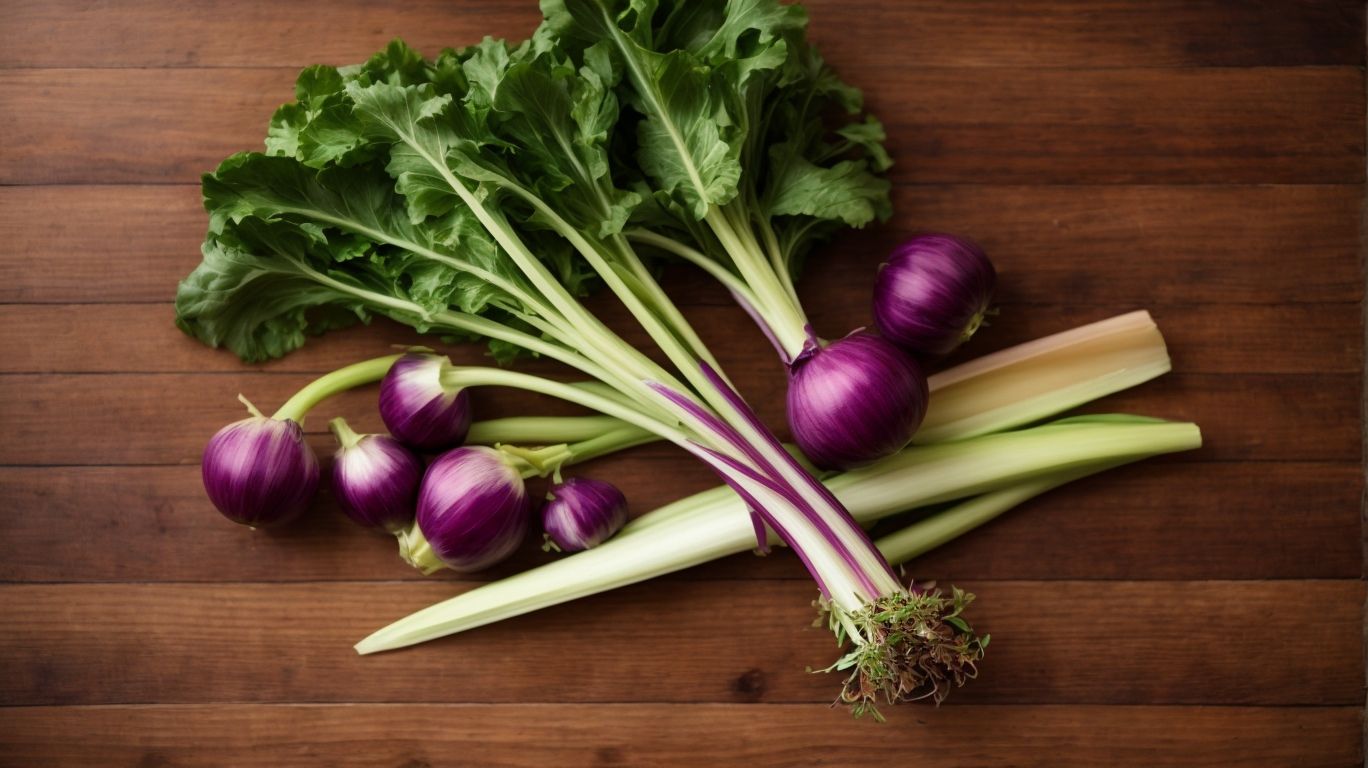
Credits: Poormet.Com – Alexander Brown
Cooking kohlrabi opens up a world of culinary possibilities, from sautéed kohlrabi to roasted variations, allowing you to explore its unique flavor profiles.
When sautéing kohlrabi, it’s best to cut it into uniform pieces for even cooking. Heat olive oil in a skillet, add diced kohlrabi, and season with salt and pepper. Sauté until the pieces are tender-crisp and slightly caramelized, enhancing their natural sweetness. Roasting kohlrabi involves tossing wedges or cubes in olive oil, sprinkling with herbs like thyme or rosemary, and roasting until they develop a delicious golden crust.
Roasting Kohlrabi
Roasting kohlrabi in the oven with garlic and Parmesan cheese yields a delectable dish that highlights the vegetable’s natural sweetness and savory notes.
When roasted, kohlrabi transforms into a tender yet slightly crispy treat with caramelized edges that add a delightful contrast of textures. The garlic infuses a rich, aromatic flavor into the dish, complemented by the umami depth of the Parmesan cheese. The oven’s dry heat coaxes out the kohlrabi’s inherent sweetness, while also enhancing its earthy undertones.
By slicing the kohlrabi into uniform pieces and evenly distributing the garlic and Parmesan, you ensure that each bite is bursting with flavor. The edges of the kohlrabi caramelize beautifully, creating a savory crust that pairs perfectly with the subtle nuttiness of the cheese.
Sautéing Kohlrabi
Sautéing kohlrabi in a pan with garlic and olive oil creates a delightful dish that showcases the vegetable’s natural flavors and textures.
To achieve the perfect sautéed kohlrabi, start by peeling and slicing the vegetable into thin, even pieces. Heat olive oil in a pan over medium heat and add minced garlic for a fragrant base. Then, gently sauté the kohlrabi until it turns golden brown, retaining its crunchiness. For a flavor boost, sprinkle some salt and pepper, or perhaps a touch of red pepper flakes for a subtle kick. You can also experiment with adding fresh herbs like parsley or thyme to complement the dish and bring out the kohlrabi’s earthy tones. Remember, the key to a successful sauté is to keep the ingredients moving in the pan to prevent burning and ensure even cooking.
Steaming Kohlrabi
Steaming kohlrabi with a touch of lemon zest preserves its natural goodness and creates a light, refreshing dish perfect for a healthy meal.
Steaming vegetables helps retain their nutrients and vibrant colors while maintaining a delicate texture. When combined with the zesty aroma of lemon zest, the kohlrabi transforms into a delightful and flavorful treat that bursts with freshness.
This method of cooking is ideal for those looking for a simple yet delicious way to enjoy the earthy flavors of kohlrabi without overpowering them. Adding a hint of lemon zest enhances the overall taste profile of the dish, making it a go-to option for those seeking a light and nutritious meal option.
Boiling Kohlrabi
Boiling kohlrabi in broth with aromatic seasonings infuses the vegetable with rich flavors and creates a savory dish that complements various main courses.
When preparing this dish, start by peeling the kohlrabi and cutting it into uniform pieces to ensure even cooking. Then, in a pot, bring the broth to a gentle boil and add the kohlrabi pieces, allowing them to simmer until they are tender but still have a slight crunch to maintain their texture.
The key to achieving a well-balanced flavor profile lies in the choice of seasonings. Incorporating fresh herbs such as thyme, rosemary, or parsley can elevate the taste of the kohlrabi, while a pinch of garlic powder or a squeeze of lemon juice adds a zesty twist.
Grilling Kohlrabi
Grilling kohlrabi with a drizzle of balsamic vinegar imparts a smoky flavor and caramelized texture, elevating the vegetable into a delicious grilled treat.
To start this flavorful journey, begin by peeling the tough outer skin of the kohlrabi and then slice it into quarter-inch rounds. Next, brush each slice with a mixture of olive oil, salt, and pepper to ensure a perfect balance of flavors on the grill. Preheat the grill to medium-high heat and place the kohlrabi rounds directly on the grates. Let them cook for about 5-6 minutes per side until you achieve those beautiful grill marks and a slightly charred exterior.
Making Kohlrabi Fries
Transform kohlrabi into crispy fries by cooking them in a skillet with butter, creating a delightful snack or side dish with a crunchy texture and savory taste.
To achieve the perfect balance of softness inside and crispiness outside, start by peeling the tough skin of the kohlrabi and cutting it into thin stick-like shapes. Heat a skillet over medium heat, add a generous knob of butter to infuse that rich flavor into the fries. Place the kohlrabi sticks in the sizzling skillet, ensuring they are evenly spread out to promote consistent cooking. Sauté them until they turn golden brown, flipping them occasionally to crisp up all sides evenly. The butter not only enhances the taste but also helps in achieving that irresistible crunch that characterizes a fantastic batch of kohlrabi fries.
How to Incorporate Kohlrabi into Your Meals?
Incorporating kohlrabi into your meals adds a refreshing twist to traditional dishes, whether in soups, salads, stir-fries, or other culinary creations.
This versatile vegetable can be sliced and added to salads for a crispy texture, grated and mixed into slaws for a refreshing crunch, or even baked as crispy kohlrabi chips for a healthy snack option.
When incorporated into stir-fries, kohlrabi lends a unique flavor that pairs well with various proteins like chicken, tofu, or shrimp. Adding diced kohlrabi to soups and stews introduces a subtle sweetness and contributes a hearty bite to each spoonful.
Kohlrabi Soup
Craft a delicious kohlrabi soup with a flavorful mirepoix base, blending the vegetable’s essence with aromatic ingredients for a comforting and nutritious dish.
Start by peeling and dicing fresh kohlrabi, known for its delicate yet slightly peppery taste.
The mirepoix base of sautéed onions, carrots, and celery creates a robust foundation, enhancing the overall depth of flavors in the soup.
Simmer the kohlrabi and mirepoix mixture in a rich vegetable broth until the vegetables are tender and infused with the savory broth.
The combination of kohlrabi’s unique sweetness and the earthy notes from the mirepoix results in a harmonious blend that is both satisfying and nourishing.
Kohlrabi Salad
Whip up a refreshing kohlrabi salad tossed in apple cider vinegar dressing, offering a crunchy and tangy dish that complements any meal or stands on its own.
The key to crafting this flavorful salad lies in the marriage of kohlrabi’s crispness with the tartness of apple cider vinegar.
To begin, peel and julienne the kohlrabi, ensuring thin, uniform slices that enhance the salad’s texture. Next, prepare the dressing by whisking apple cider vinegar, olive oil, honey, and a dash of mustard for a zesty kick. Toss the kohlrabi with diced apples, walnuts, and a sprinkle of fresh herbs for a vibrant touch. This refreshing salad is not only a crowd-pleaser but also a nutritional powerhouse filled with vitamins and antioxidants.
Kohlrabi Slaw
Prepare a creamy kohlrabi slaw that combines the vegetable’s crispiness with a luscious cream dressing, delivering a satisfying and indulgent side dish or snack.
Begin by peeling the kohlrabi and shredding it into thin strips using a sharp knife or a food processor.
In a mixing bowl, combine the shredded kohlrabi with finely chopped red cabbage for a pop of color and added crunch.
Next, prepare the rich cream dressing by whisking together mayonnaise, a splash of apple cider vinegar, a pinch of sugar, and a sprinkle of salt and pepper for seasoning.
Kohlrabi Chips
Indulge in crispy kohlrabi chips seasoned with a hint of salt and pepper, offering a wholesome and addictive snack that satisfies your crunchy cravings.
Transforming kohlrabi into delectable chips is simpler than you might think. Start by peeling the kohlrabi and slicing it into thin, even rounds. Toss the slices in a light coating of olive oil, sprinkling them with sea salt and freshly ground black pepper for that perfect balance of flavor. Arrange the seasoned slices on a baking sheet and bake them in a preheated oven until golden and crisp. The result? A guilt-free snack that boasts a satisfying crunch and rich taste, ideal for guilt-free snacking or as a wholesome side dish.
Kohlrabi Stir-fry
Whip up a quick and flavorful kohlrabi stir-fry with your favorite seasonings, creating a vibrant and nutritious dish that pairs well with rice or noodles.
Once you have peeled and diced the kohlrabi, heat a wok or skillet with oil over medium-high heat. Add in thinly sliced onions and minced garlic to infuse the dish with aromatic flavors. The crisp texture of the kohlrabi adds a unique element to the stir-fry, complementing the tender vegetables perfectly. Don’t forget a splash of soy sauce or a sprinkle of sesame seeds for an added depth of umami taste. This dish is not only delicious but also a great way to incorporate more vegetables into your diet.
Tips and Tricks for Cooking with Kohlrabi
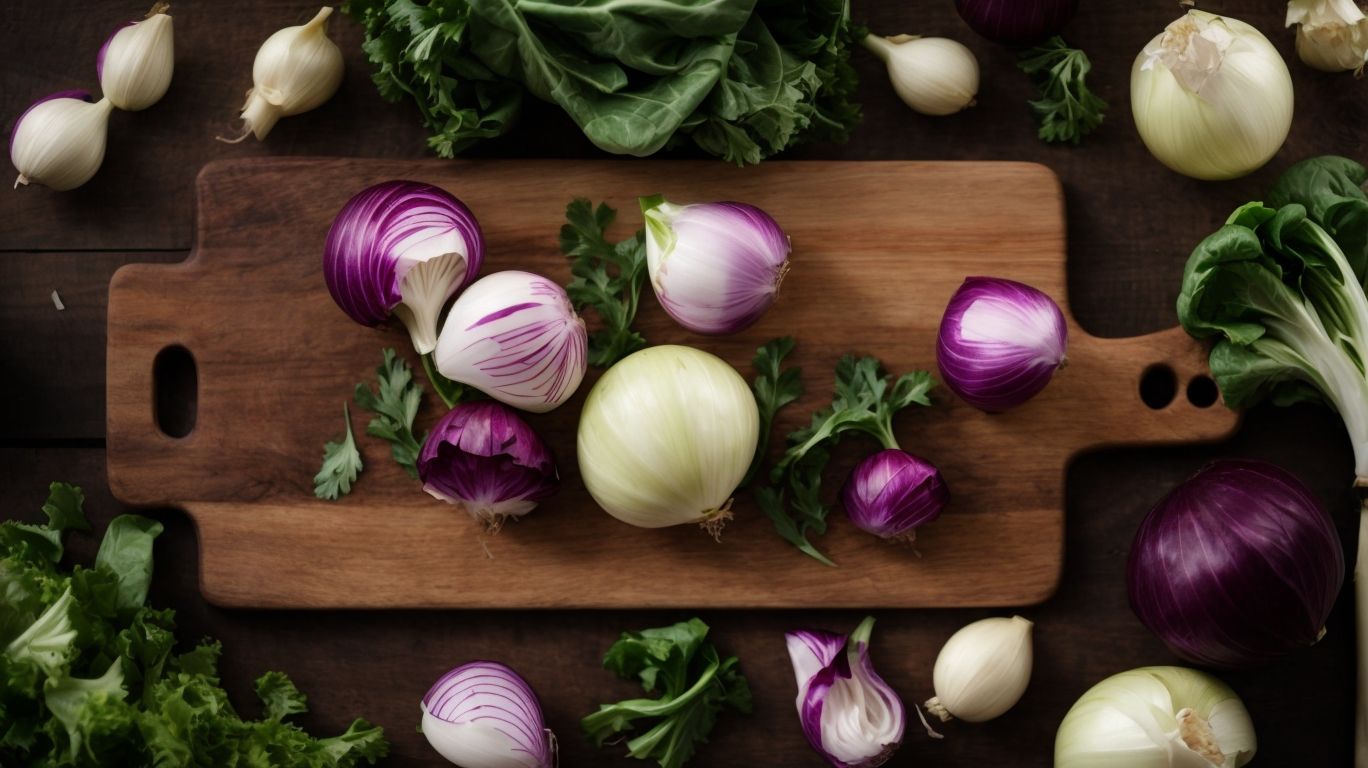
Credits: Poormet.Com – Bradley Torres
Explore innovative tips and tricks to enhance your kohlrabi dishes, from creative variations to seasoning suggestions that elevate the vegetable’s natural flavors.
One way to add a burst of flavor to your kohlrabi dishes is to experiment with different seasoning blends. For a classic touch, try mixing olive oil, garlic, and a sprinkle of Parmesan cheese before roasting or grilling your kohlrabi slices.
- For a zesty kick, consider tossing your kohlrabi in a mixture of lemon juice, cumin, and a pinch of red pepper flakes. This combination adds a bright and spicy dimension to the dish, perfect for those who enjoy a bit of heat.
- Alternatively, a crispy kohlrabi chip rendition can be achieved by thinly slicing the vegetable, seasoning with paprika, salt, and pepper, and baking until crunchy. These chips make for a delightful snack or a crunchy topping for salads.
Frequently Asked Questions
What is kohlrabi and how do I cook it?
Kohlrabi is a vegetable in the cabbage family and has a taste similar to broccoli stems. To cook it, peel the outer layer and chop into cubes or slices before boiling, roasting, or sautéing.
Can I eat kohlrabi raw?
Yes, kohlrabi can be eaten raw and is delicious when thinly sliced and added to salads or used as a dipper for hummus or other dips.
What is the best way to prepare kohlrabi?
The best way to prepare kohlrabi is to remove the tough outer layer with a vegetable peeler, chop it into desired shapes, and cook it using your preferred method.
How long should I cook kohlrabi?
The cooking time for kohlrabi will vary depending on the method used. Boiling or steaming it for 8-10 minutes, roasting for 15-20 minutes, or sautéing for 5-7 minutes should result in a tender texture.
Can I freeze cooked kohlrabi?
Yes, cooked kohlrabi can be frozen for later use. Allow it to cool completely before placing it in an airtight container or freezer bag. It can be stored in the freezer for up to 3 months.
Are there any other ways to cook kohlrabi?
Yes, you can also grate kohlrabi to make a slaw or add it to soups and stews for a delicious and nutritious addition. It can also be fermented to make a tangy, probiotic-rich side dish. Get creative and experiment with different cooking methods!



